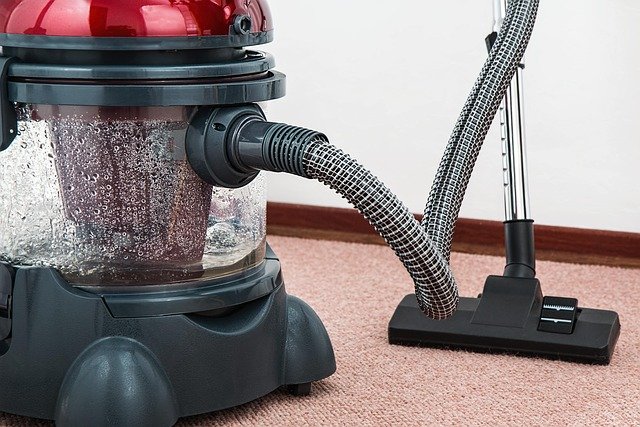Streamlining cleaning workflows with mobile supply trolleys
Mobile supply trolleys can transform how teams approach routine cleaning by centralizing supplies, improving mobility, and supporting consistent housekeeping practices. This overview examines how trolleys influence workflow, storage, ergonomics, safety, and sustainability so facilities can make practical choices for daily maintenance and hygiene needs.

How do carts improve cleaning workflow?
Mobile supply trolleys act as a moving hub for cleaning tasks, reducing time spent returning to supply closets and enabling staff to carry a full complement of cleaning tools and consumables. By keeping cleaning solutions, microfiber cloths, trash liners, and small tools organized on a single trolley, teams can complete sequential tasks with fewer interruptions. That continuity improves workflow efficiency and helps supervisors standardize routes and task lists. When combined with clear labeling and modular compartments, trolleys support predictable stocking and make shift handovers smoother, benefiting facility operations and overall maintenance consistency.
How do carts support maintenance and safety?
Well-designed trolleys support maintenance routines by providing dedicated space for repair kits, signage, and safety equipment. Incorporating secure compartments for hazardous chemicals, lockable cabinets for sharp tools, and visible wet-floor signage reduces accidental exposure and improves transport safety across a facility. Clear separation of cleaning agents and maintenance supplies reduces cross-contamination risks and helps staff comply with safety protocols. Wheels with reliable brakes, stable bases, and ergonomic push handles minimize the risk of strain or tip-overs during transport. Properly outfitted trolleys contribute to safer, more organized maintenance practices across buildings and grounds.
How do carts aid hygiene and housekeeping?
Mobile trolleys help maintain hygiene by centralizing products used for disinfection and surface cleaning, making it easier to follow scheduled housekeeping protocols. Storing color-coded cloths, labeled disinfectants, and single-use items in distinct zones on the trolley supports infection-control procedures and reduces the chance of cross-use. For housekeeping teams, trolleys enable faster room turnovers by keeping linen, amenity restocks, and trash liners at hand. This structured approach promotes consistent hygiene standards throughout a facility and supports routine inspections and quality checks.
This article is for informational purposes only and should not be considered medical advice. Please consult a qualified healthcare professional for personalized guidance and treatment.
How should supplies and storage be organized?
Effective organization on a trolley starts with modular storage that separates frequently used consumables from bulkier equipment. Use compartmentalized trays for small items like gloves, wipes, and hand sanitizer, while larger bins hold mop heads and trash bags. Labeling compartments and keeping an inventory checklist on the trolley helps with rapid restocking and prevents supply shortages during shifts. Consider removable caddies for specialized tasks so teams can swap kits quickly without overloading the trolley. Thoughtful organization reduces clutter, supports predictable supply levels, and speeds up response times for both routine cleaning and unexpected spills.
What role do mobility and ergonomics play?
Mobility and ergonomics are central to trolley effectiveness. Smooth-rolling casters reduce fatigue and make transport between rooms or floors less taxing, while swivel wheels improve maneuverability in tight corridors. Ergonomic handle heights and balanced weight distribution lessen strain on staff, lowering the risk of musculoskeletal issues during long shifts. Lightweight yet durable materials for frames and wheels contribute to easier transport without compromising performance. Consider trolleys with adjustable features to accommodate diverse staff sizes and tasks, which supports safe handling and sustained productivity across a facility.
How to balance durability and sustainability?
Choosing durable materials like reinforced plastic or corrosion-resistant metal extends trolley lifespan and reduces replacement frequency, which can also support sustainability goals by minimizing waste. At the same time, look for options that use recyclable components or that are produced with lower-impact manufacturing methods. Replaceable parts—casters, handles, and bins—allow for repairs instead of full-unit disposal. Durability considerations should include resistance to cleaning chemicals and repeated loading cycles to ensure the trolley remains safe and functional for housekeeping and maintenance tasks over time.
Conclusion
Mobile supply trolleys are a practical tool for streamlining cleaning, supporting routine maintenance, and enhancing hygiene practices within facilities. By prioritizing organization, ergonomics, and safety in trolley selection and setup, teams can improve workflow efficiency and consistency across housekeeping and maintenance operations. Balancing durability and sustainability ensures that trolleys remain a long-term asset that contributes to orderly, reliable facility management without compromising staff well-being or operational standards.






